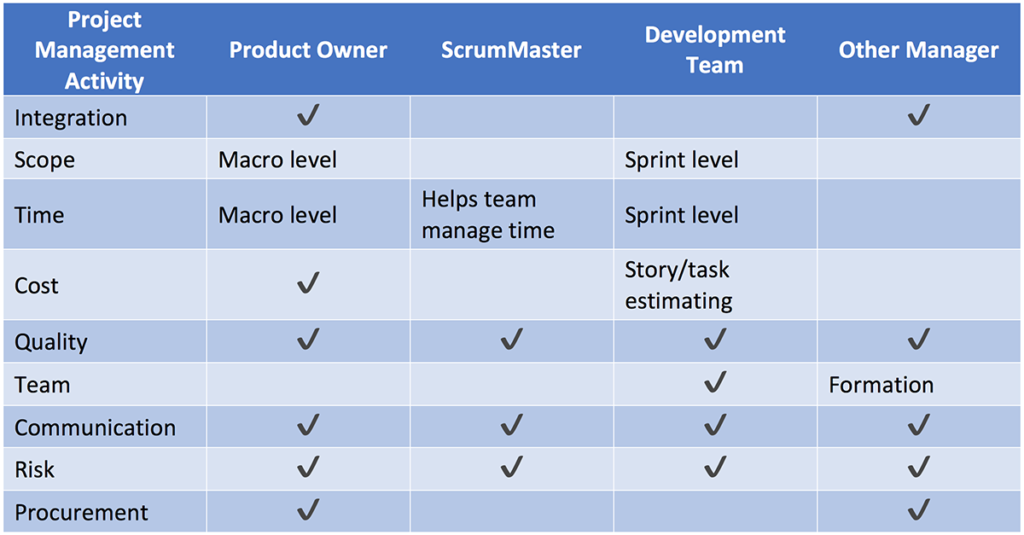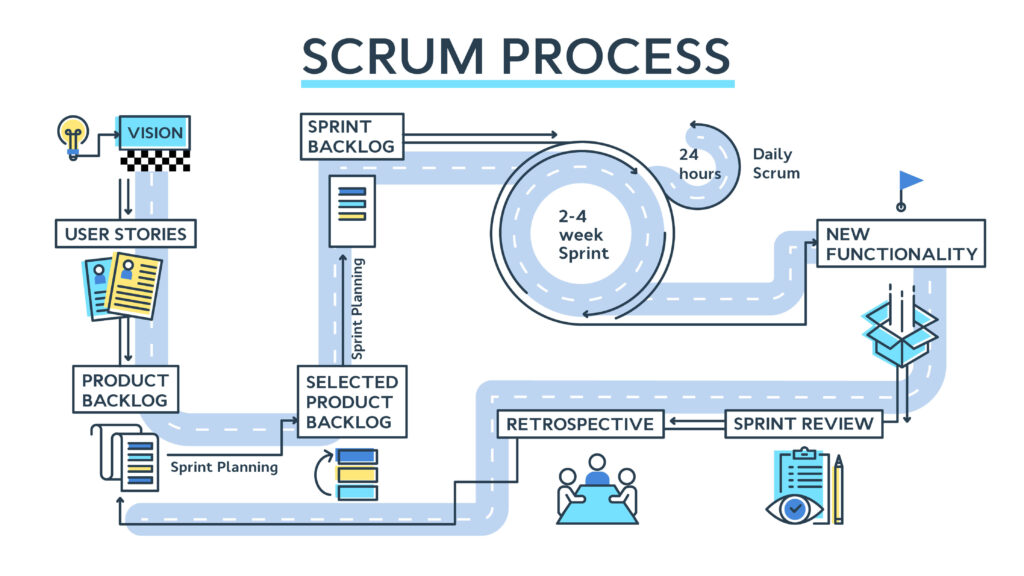
What Happens to Managers in Scrum
What Happens to Managers in Scrum
Completed some initial training and now wondering what happens to Managers in scrum? In this article, we’ll talk about of the traditional role of a manager changes within the Scrum methodology and where the skill sets of managers are best placed to help an organisation to transform. Speak to MCTC today about our consultancy advice and training packages.
Introduction to Scrum
Scrum is an agile framework that is widely used in organisations to improve collaboration, communication, and efficiency in project management. It is based on the principles of transparency, inspection, and adaptation.
Role of Managers in Scrum
In Scrum, there is no specific role for managers. However, managers can still contribute to the success of Scrum teams in different ways. Middle managers, in particular, play a valuable role in supporting agile organisations.
This image is property of lh4.googleusercontent.com.
Challenges in Translating Managers into Scrum Roles
One common mistake is directly translating middle managers into Scrum roles, such as scrum masters or product owners. The skills required for successful management may not be the same as the skills required for these Scrum roles. It is important to identify the specific skills and expertise needed for each role and ensure that managers are appropriately placed.
Transforming PMO to Support Agile Methodologies
The Project Management Office (PMO) can be transformed to support agile methodologies. This can be done by adapting the PMO to become a Project Acceleration Office (PAO), which focuses on accelerating projects through an understanding of Scrum and agile principles. This transformation enables the PMO to align with the needs of agile organisations.

This image is property of innolution.com.
Different Roles and Characteristics in Scrum
Scrum consists of different roles, each with their own characteristics and responsibilities. The Scrum Master is responsible for coaching the team and helping them improve their processes and performance. The Product Owner guides the team and makes decisions about the product direction based on the needs of the business and customers. The Development Team is responsible for delivering the product increment.
Jeff Sutherland and Scrum Inc
Jeff Sutherland, the co-creator of Scrum, and Scrum Inc, a leading organisation in the Scrum community, have played a crucial role in promoting and advancing the use of Scrum. Their expertise and contributions have helped numerous organisations implement Scrum successfully.

This image is property of scrumorg-website-prod.s3.amazonaws.com.
Valuable Role of Middle Management
Despite not having a specific role in Scrum, middle managers can still have a valuable role in an Agile organisation. They can support the organisation by aligning with Scrum values and identifying opportunities for improvement and growth.
The Role of the Product Owner
The Product Owner is a key role in Scrum as they are responsible for guiding the team and making important decisions about the product direction. They must ensure that the product meets the needs of both the business and the customers.

This image is property of geekbot.com.
The Role of the Scrum Master
The Scrum Master is responsible for the overall success of the Scrum team. They act as a coach, facilitating the team’s progress, removing obstacles, and ensuring that the Scrum framework is implemented effectively.
Scaling Scrum and Middle Management
Scaling Scrum requires middle management to adapt and take on different roles. This may include becoming Chief Product Owners or Function Owners to support the teams and ensure smooth collaboration between multiple teams.
Key Responsibilities for Middle Managers
Middle managers in an agile organisation should focus on removing impediments, paving the way for team success, and managing professional development. They can provide guidance and support to the Scrum teams and help them achieve their goals.
Adapting to a Team-Centric Mindset
Middle managers need to adjust their mindset to embrace the team-centric approach of Scrum. They should prioritise collaboration, open communication, and empowering the team to make decisions. Incentive plans should also be aligned with Agile values to encourage teamwork and innovation.
Secure Employment with Changing Roles
While the roles of middle managers may change in an Agile organisation, their employment is generally secure. It is important for middle managers to identify their passions and align them with the appropriate Scrum role. By embracing Agile principles and continuously developing their skills, middle managers can secure their place in the evolving organisational landscape.
Conclusion
Managers in Scrum play a crucial role in supporting the success of the organisation. By understanding the different roles and characteristics in Scrum, transforming the PMO to support Agile methodologies, and adapting to a team-centric mindset, managers can contribute significantly to the implementation and success of Scrum in their organisations. Embracing Agile principles and continuously developing their skills will help managers secure their employment and contribute to the ever-evolving landscape of project management.
